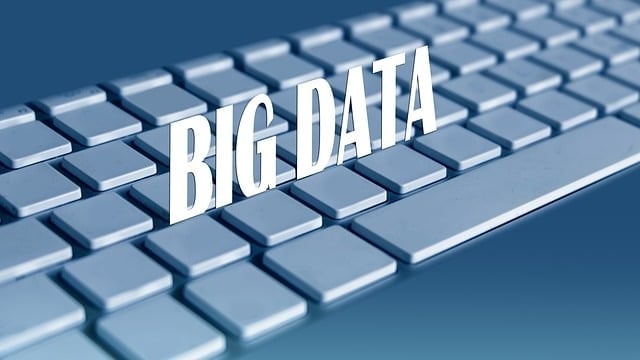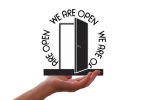Your restaurant generates mountains of customer data every day. Every order, every customer interaction, every minute of operation creates information that could transform your business. But without the right tools to make sense of it all, that data is just digital noise, making it difficult to support data-driven decisions.
Restaurant analytics platforms turn that noise into clear signals. They show you what’s working, what isn’t, and—most importantly—what to do about it, including analyzing sales trends. Yet most restaurant owners use less than 20% of their analytics hub capabilities.
In 2024, restaurants that fully leverage their analytics tools are seeing profit margins 15-30% higher than their competitors. The difference isn’t just having the technology—it’s knowing how to use it.
Consider this: A Seattle restaurant owner discovered through analytics that her bestselling dish was her least profitable. After adjusting prices by just $2 and reworking the recipe slightly, she added $3,700 to her monthly bottom line.
Are you getting that kind of return from your analytics platform?
The truth is, most restaurant operators are sitting on gold mines of data but digging in the wrong places. They track basic metrics like sales and labor costs but miss the deeper insights that drive real growth and help streamline operations.
What if your analytics platform could tell you exactly when to run promotions, which menu items to highlight, and how to price them for maximum profit?
Save 80% of delivery management time
We handle everything:
- Dedicated operations manager
- Real-time tracking dashboard
- Automated customer notifications
- Urgent issue resolution
Step 1: Understand Restaurant Analytics Platform Features
Restaurant analytics platforms transform raw data into strategic advantages through specific features.
Understanding core vs. advanced capabilities helps you select the right platform for your specific business needs.
Effective analytics implementation can increase profit margins by 3-5% through targeted operational improvements.
Restaurant analytics platforms are software systems that collect, organize, and analyze data from your restaurant operations. At their core, these platforms help answer the question: “What is restaurant data analytics?” Simply put, it’s the process of examining restaurant data analytics to make better business decisions.
Essential Features for Data-Driven Decisions In the Restaurant Industry
The foundation of any effective restaurant analytics platform lies in its ability to provide clear, actionable insights. When evaluating platforms, focus first on how they handle basic data collection and presentation.
User Interface and Ease of Use
A platform’s interface determines how quickly your team can adopt and benefit from the system. Look for platforms with clean, logical layouts that present information without requiring technical expertise.
The best interfaces offer:
Customizable dashboards that highlight your most important metrics
Clear visual representations of data (charts, graphs, heat maps)
Filtering options to focus on specific periods or locations
Mobile accessibility for on-the-go decision making
Research from Cornell University’s School of Hotel Administration found that restaurants abandon analytics platforms within six months if staff find them difficult to use. Training requirements should be minimal, with intuitive navigation that makes sense to restaurant professionals, not just data scientists.
Test platforms with actual staff members who will use them daily. Their feedback often reveals usability issues that technical evaluations miss. Ask vendors for trial periods or demonstrations with your actual data to see how the interface handles your specific information needs and gain insight into usability.
Integration with Other Systems For Restaurant Data Analytics
The power of analytics multiplies when your platform connects seamlessly with existing restaurant systems. Integration capabilities determine how comprehensive your data analysis can be.
Critical integration points include:
Point of Sale (POS) systems to capture sales data, order patterns, and server performance
Inventory management systems to connect sales with food costs
Scheduling software to analyze labor costs against traffic patterns
Online ordering platforms to incorporate digital sales channels
Reservation systems to track table turnover and guest patterns
According to the 2024 Restaurant Technology Industry Report, restaurants with fully integrated analytics systems report 23% higher data accuracy and spend 68% less time on manual data entry than those using standalone systems, thanks to real-time access.
When evaluating integration capabilities, look beyond simple data transfer. The best platforms offer two-way communication, allowing your analytics system to send information back to operational systems. For example, a platform that can analyze slow-moving inventory items and then automatically adjust par levels in your inventory system provides significantly more value than one that just reports the problem.
Advanced Features for Predictive Analytics
While basic reporting tells you what happened yesterday, including historical sales trends, predictive analytics helps you plan for tomorrow. Advanced platforms move beyond big data descriptive analytics (what happened) to predictive capabilities (what will happen).
Machine Learning Capabilities For Big Data
Machine learning represents a significant advancement in restaurant analytics, enabling systems to identify patterns humans might miss and improve predictions over time.
Modern platforms use machine learning to:
Detect unusual patterns that might indicate theft or operational problems
Identify correlations between seemingly unrelated factors (weather patterns and specific menu item sales)
Segment customers based on ordering habits and preferences
Recommend menu modifications based on profitability and popularity trends
The technology works by analyzing historical data to create models that predict future outcomes. For example, machine learning algorithms can analyze two years of sales data to understand how much revenue different conditions generate, alongside local event calendars, weather records, and staff schedules to predict optimal staffing levels for any future date with remarkable accuracy.
Industry data shows restaurants using machine learning-powered scheduling can reduce labor costs by 4-7% while maintaining or improving service levels. These systems become more accurate over time, helping to cut costs as they incorporate new data into their models.
When evaluating machine learning features, ask vendors about the specific training data used for their models. Platforms trained primarily on quick-service restaurant data may perform poorly when applied to fine dining establishments. The best systems allow for customization based on your restaurant’s unique patterns.
Forecasting Future Sales Trends in Customer Behavior
Understanding future customer behavior allows you to prepare for changes before they happen and gain a better understanding, creating a significant competitive advantage through meaningful insights.
Advanced forecasting features include:
Demand prediction for specific days, times, and menu items
Early warning systems for shifting customer preferences
Sales projections based on multiple variables (promotions, weather, local events)
Customer lifetime value predictions to guide marketing efforts
The Harvard Business Review reports that restaurants using advanced forecasting techniques reduce food waste by 20-30% compared to those using basic inventory management. This improvement comes from the ability to order ingredients more precisely based on anticipated demand.
Sophisticated platforms incorporate external data sources that influence restaurant performance. These might include local event calendars, weather forecasts, economic indicators, or social media sentiment analysis. The integration of these diverse data points, especially from a cloud-based pos system, creates more accurate predictions than customer data or internal data alone can provide.
Competitive Analysis Features
Understanding your position in the market provides crucial context for internal performance metrics. Advanced platforms offer tools to benchmark your restaurant against competitors.
Market Comparison Tools
Effective restaurant analytics platforms provide methods to compare your performance against industry standards, including achieving the highest average transaction values and direct competitors.
Key comparison metrics include:
Average ticket size relative to similar restaurants
Table turnover rates compared to industry benchmarks
Staff productivity metrics against regional averages
Menu pricing analysis against direct competitors
Customer satisfaction scores relative to category leaders
According to research from Technomic, restaurants that regularly benchmark performance against competitors show a 2.3 times higher likelihood of outperforming their market segment in year-over-year growth.
The most advanced platforms incorporate third-party data sources like credit card processing information, review aggregators, and industry surveys to provide competitive context without requiring direct access to competitor systems.
When evaluating these features, verify the source and frequency of comparative data. Platforms using outdated or limited sample sizes may provide misleading comparisons. It is best to ask vendors about their data collection methodologies and the specific restaurants included in their comparison sets, especially about how they use pos system data.
Menu and Pricing Performance Restaurant Analytics
Menu engineering represents one of the highest-value applications of restaurant analytics, allowing precise optimization of your offerings based on profitability and popularity.
Sophisticated menu analytics features include:
Item profitability analysis accounting for all ingredient costs
Menu item performance categorization (stars, puzzles, plowhorses, and dogs)
Price elasticity testing to determine optimal price points
Suggested menu modifications based on performance patterns
Cannibalization analysis to identify when new items hurt existing sales
Research from Boston Consulting Group indicates that data-driven menu optimization typically increases restaurant profit margins by 2-5% without reducing customer satisfaction.
The best systems integrate with digital menu boards or online ordering platforms to enable real-time A/B testing of prices, descriptions, or placement. This allows restaurants to quickly identify the most effective presentations before implementing changes across all channels.
Operational Efficiency Analysis For Customer Data
Beyond sales and customer data, advanced platforms examine how efficiently your restaurant converts inputs (labor, ingredients, energy) into outputs (meals, customer satisfaction, revenue), including menu insights.
Kitchen Performance Metrics
The kitchen represents both a major cost center and the heart of your product creation. Analytics platforms with strong kitchen performance features help optimize this critical operation.
Key kitchen analytics include:
Ticket time analysis by station, staff member, and menu item
Food cost percentage tracking with variance alerts
Preparation time optimization recommendations
Waste tracking and reduction opportunities
Equipment usage patterns and maintenance predictions
Advanced platforms connect kitchen performance data with customer satisfaction metrics to identify the optimal balance between speed and quality. For example, data might reveal that reducing ticket times below 12 minutes doesn’t improve customer satisfaction but significantly increases food waste and remake rates.
When evaluating kitchen analytics features, look for platforms that capture data automatically rather than requiring manual entry. Systems integrated with kitchen display screens and digital ticket systems provide more accurate and comprehensive data than those relying on staff recording.
Staff Productivity and Scheduling Actionable Insights
Labor typically represents 30-35% of restaurant costs, making it a critical area for optimization. Advanced analytics platforms provide insights beyond basic scheduling and time tracking.
Comprehensive staff analytics include:
Sales per labor hour by role, individual, and shift
Server efficiency metrics (average tickets, turn time, upselling success)
Optimal staffing models based on historical patterns
Training impact analysis on performance metrics
Correlation between staff satisfaction and customer experience
The most sophisticated platforms incorporate team composition analysis, identifying which combinations of staff members produce the best results based on specific metrics. This might reveal that certain servers and kitchen staff work particularly well together, or that specific management styles produce better outcomes with different team configurations, which is essential for operations managers.
Customer Experience Analytics with Data Sources
Understanding the guest experience beyond basic sales data helps restaurants build loyalty and increase customer lifetime value. Advanced platforms offer comprehensive tools for analyzing the entire customer journey.
Sentiment Analysis and Feedback Integration
Modern restaurant analytics platforms go beyond collecting feedback to analyzing patterns and emotional content in customer communications.
Advanced sentiment features include:
Natural language processing of written reviews and comments
Emotional tone analysis of feedback across channels
Topic clustering to identify common themes in feedback
Correlation between sentiment and operational metrics
Early warning systems for emerging customer concerns
The most sophisticated systems integrate data from multiple feedback channels, including review sites, social media, direct surveys, and in-person comments recorded by staff. This comprehensive view prevents decisions based on the loudest voices rather than representative feedback.
When evaluating sentiment analysis features, test the system with sample reviews from your actual customers. Some platforms perform better with certain types of language or feedback styles. The best systems can accurately identify sentiment in context, understanding that phrases like “the wait was long but worth it” contain both positive and negative elements.
Loyalty Program Performance Tracking
For restaurants with loyalty programs, analytics platforms should provide detailed insights into program performance and member behavior.
Comprehensive loyalty analytics include:
Member acquisition cost and return on investment
Lifetime value comparison between members and non-members
Reward redemption patterns and preferences
Visit frequency changes after enrollment
Segmentation of members by behavior patterns
Advanced platforms can identify which specific loyalty offers drive the most valuable behaviors for different customer segments. For example, data might show that offering free appetizers drives more repeat visits among young professionals, while percentage discounts are more effective for family diners.
The most valuable loyalty analytics connect program performance with profitability metrics, ensuring that your loyalty program drives genuine business growth rather than just discounting to existing customers. Look for platforms that can isolate the incremental revenue attributable to loyalty program membership versus what customers would have spent anyway.
Understanding restaurant analytics platform features represents your first step toward data-driven success. The insights gained from these systems, which allow you to analyze all the data, directly inform pricing strategies, operational decisions, and marketing efforts that will grow your business. As you compare platforms, prioritize features that address your specific challenges and goals rather than simply choosing the system with the longest feature list.
Step 2: Implement Pricing Strategies for Restaurant Analytics
Turn your data analytics into pricing power with targeted adjustments
Use demand patterns and customer feedback to set optimal prices
Track performance metrics to fine-tune your pricing strategy
Restaurant pricing directly impacts your bottom line. With analytics, you can move beyond guesswork to precision pricing that maximizes profits while keeping customers happy. Let’s look at how to use your restaurant analytics platform to create and implement effective pricing strategies.
Data-Driven Dynamic Pricing
Dynamic pricing adjusts your menu prices based on data patterns rather than fixed markups. This approach helps you capture more value during peak times while remaining competitive during slower periods.
Identify Peak Demand Periods
You can start by analyzing your sales data to find patterns in customer traffic. Most restaurant analytics platforms can show you:
Hourly sales volumes across different days
Weekly traffic patterns
Seasonal fluctuations
Special event impacts (holidays, local events)
Segment Your Menu Items
Not all items on your menu should be priced using the same strategy. It is best to use your restaurant analytics platform to categorize items based on:
Profit margin
Order frequency
Customer sensitivity to price changes
Competitor pricing
High-margin, frequently ordered items often present the best opportunities for dynamic pricing. Your analytics platform should provide margin analysis for each menu item, helping you identify which products to target first.
Create at least three segments:
Premium items (low price sensitivity)
Standard items (moderate price sensitivity)
Value items (high price sensitivity)
This segmentation helps you decide where to apply price changes without risking customer dissatisfaction.
Create Pricing Rules Based on Demand
After identifying peak periods and segmenting your menu, establish clear pricing rules. Your restaurant analytics platform might offer tools to schedule staff efficiently.
Rule-based pricing tools
Time-based pricing templates
Customizable price modifiers
Set up specific rules like:
Increase premium cocktail prices by 8% during Friday/Saturday evenings
Offer 15% discounts on select appetizers during Monday-Wednesday 3-5 PM
Apply seasonal pricing to dishes with ingredients that fluctuate in cost
Use Customer Feedback for Price Adjustments
Your restaurant analytics platform likely integrates customer feedback data. You can use this information to fine-tune your pricing approach:
Review sentiment analysis around recently adjusted menu items
Check abandonment rates when customers view but don’t order certain items
Analyze online reviews mentioning value or pricing
Track Results
Implementing pricing changes without measuring results is like driving with your eyes closed. Your restaurant analytics platform provides the tools to track the impact of every pricing decision.
Set Up Key Performance Indicators (KPIs)
Before making any pricing changes, establish clear KPIs to measure success:
Overall revenue
Profit margin
Item-specific sales volume
Average check size
Customer return rate
Analyze Price Elasticity
Price elasticity measures how sensitive demand is to price changes. Your restaurant analytics platform can help calculate this by comparing:
The percentage change in price
The resulting percentage change in sales volume
Items with low elasticity (demand doesn’t change much when price changes) offer opportunities for price increases with minimal sales impact.
For example, if raising a signature cocktail’s price by 10% only reduces orders by 2%, that’s a profitable change to maintain. If a dessert’s 10% price increase reduces orders by 15%, you might need to reconsider.
Your analytics platform should provide elasticity calculations or at least the raw data needed to make these calculations yourself.
Compare Against Control Groups
For more accurate results, use control groups when possible:
Apply pricing changes to select locations if you have multiple restaurants
Change pricing only on specific days of the week
Adjust prices for some menu categories but not others
This approach helps isolate the impact of pricing changes from other factors like seasonality or marketing campaigns.
Your analytics platform should allow you to filter and compare data across these control groups to get clearer insights on pricing impact.
Fine-Tune Your Strategy
Based on your results, refine your pricing approach:
Double down on successful changes by applying similar adjustments to related items
Reverse changes that negatively impact overall profitability
Test smaller increments for items that showed excessive elasticity
Explore bundling options for items where direct price changes weren’t successful
The power of analytics-based pricing is in this continuous feedback loop. Each adjustment provides data for smarter decisions moving forward.
Most successful restaurants review pricing strategies quarterly, making small adjustments rather than dramatic overhauls.
You can use your platform’s forecasting tools to model the impact of potential price changes before implementing them. This allows you to test scenarios without risking actual revenue.
Step 3: Maximize Insights from Analytics Tools
Learn how to gather and analyze restaurant data from multiple sources for better decision-making.
Discover techniques to identify patterns that can increase profitability and customer satisfaction.
Find out how to use visualization tools to communicate findings effectively to your team.
Conduct Regular Analysis
Weekly data reviews form the backbone of effective restaurant analytics. Set a consistent schedule—Monday mornings work well for many restaurants—to examine the previous week’s performance. During these sessions, focus on comparing actual results against forecasts and historical data to more effectively compare sales.
You can start by examining sales data broken down by day, meal period, and menu category. Look for unexpected variations: Did Thursday lunch unexpectedly outperform Friday? Was there a sharp decline in appetizer sales? These anomalies often point to underlying issues or opportunities. For instance, an unexpected spike in Thursday lunch sales might suggest your new promotion is working, while declining appetizer sales could indicate training issues with servers or pricing problems.
Setting Up a Data Review Process
Create a standardized data review checklist to ensure consistency:
Sales performance by day, meal period, and category
Labor costs as a percentage of sales
Food costs and waste metrics
Guest count and average check size
Promotion performance
Inventory levels
Document your findings in a shared location where management can access insights and track progress over time. This historical record becomes increasingly valuable as you collect more data points.
Identifying Meaningful Patterns
Pattern recognition separates successful data analysis from simple reporting. Look for:
Cyclical patterns: Do certain menu items sell better on specific days? Does staffing efficiency vary by shift?
Correlations: When wine sales increase, do dessert sales follow? Does server productivity correlate with check averages?
Anomalies: Sudden changes in established patterns often signal problems or opportunities requiring immediate attention.
Utilize Visualization Tools
Numbers alone rarely tell the complete story. Visual representations transform complex data into accessible insights. Most restaurant analytics platforms offer built-in visualization tools that enhance restaurant reporting and present data through charts, graphs, and dashboards.
When selecting visualization types, match them to your specific needs:
Line charts: Perfect for tracking trends over time, such as daily sales or guest counts across weeks or months
Bar charts: Ideal for comparing performance across categories, like menu item sales or server productivity
Pie charts: Useful for showing proportional relationships, such as sales mix or revenue by meal period
Heat maps: Excellent for identifying patterns across multiple variables, such as table turnover rates by section and time
Creating Effective Dashboards
Dashboards collect your most important metrics in one place for quick assessment. Follow these principles when creating dashboards:
Focus on key metrics that directly impact business decisions
Organize related metrics together (sales metrics, labor metrics, etc.)
Use color coding consistently (green for positive trends, red for concerns)
Include comparison data (previous period, targets, industry benchmarks)
Keep designs clean and uncluttered
Most restaurants benefit from having multiple dashboards for different purposes: a high-level executive dashboard showing overall performance, operational dashboards for day-to-day management, and specialized dashboards for specific departments like kitchen operations or bar management.
Sharing Insights With Your Team
Data becomes truly valuable when shared appropriately throughout the organization. Consider these approaches:
Daily pre-shift meetings: Share relevant metrics with front-line staff before each shift
Weekly management reviews: Conduct deeper analysis with department heads
Monthly all-staff meetings: Present big-picture trends and celebrate success metrics
Collect Data from Multiple Data Sources
Restaurants have access to numerous data sources, each providing unique insights. The richest analysis comes from combining these sources to create a comprehensive view of operations.
Point of Sale (POS) System Data
Your POS system serves as the primary data source for most restaurants, capturing:
Sales data by time, server, table, and menu item
Order timing and pacing
Payment methods
Discount and void information
Server performance metrics
To extract maximum value from POS data and predict future sales :
Ensure proper menu item categorization
Train staff on consistent order entry
Regularly audit modifiers and special requests
Review void and discount reasons for accuracy
Reservation and Table Management Systems
Reservation platforms provide critical guest data:
Booking lead times and no-show rates
Guest preferences and special requests
Party size distributions
Booking source (phone, website, third-party platforms)
Table turn times and dining duration
Customer Feedback and Review Sites
Online reviews and feedback forms offer qualitative data that explains the “why” behind your numbers:
Review sentiment on major platforms (Google, Yelp, TripAdvisor)
Common praise points and complaints
Specific mentions of menu items, service, or atmosphere
Changes in sentiment over time
Analyze Data for Trend Identification
Trend analysis reveals the direction your business is moving and helps predict future performance. Effective trend analysis requires both a historical perspective and forward-looking projections.
Short-term vs. Long-term Trends
Distinguish between different trend timeframes:
Daily trends: Identify immediate operational issues requiring quick fixes
Weekly trends: Spot emerging patterns that might require staffing or inventory adjustments
Monthly trends: Inform menu changes and marketing strategies
Seasonal trends: Guide major operational shifts and annual planning
Year-over-year trends: Evaluate overall business health and strategic direction
Correlating Multiple Data Points
The most valuable insights often emerge from connecting seemingly unrelated data points:
Weather data + sales patterns: Understand how weather affects different menu categories
Local events + reservation patterns: Predict busy periods based on community calendars
Menu mix + server performance: Identify which servers excel at selling specific items
Social media engagement + promotional item sales: Measure marketing effectiveness
How Restaurants Collect Data
Restaurant data collection happens through both automated systems and manual processes. Effective collection strategies balance comprehensiveness with practicality.
Automated Data Collection Methods
Modern restaurants employ several automated collection methods:
POS integration: Automatically captures sales, inventory, and labor data
Kitchen display systems: Track preparation times and order accuracy
Inventory management software: Monitors stock levels and usage patterns
Reservation systems: Collect guest information and dining preferences
Digital loyalty programs: Track customer behavior across multiple visits
Small businesses can start with basic POS data collection and gradually expand to more sophisticated systems as they grow.
Manual Data Collection Strategies
Not all valuable data can be collected automatically. Consider these manual approaches:
Manager observation forms: Standardized checklists for evaluating service quality
Staff feedback sessions: Regular meetings to gather operational insights
Customer comment cards: Physical or digital forms requesting specific feedback
Secret shopper programs: Objective third-party evaluations of the guest experience
Competitor research: Regular visits to similar restaurants to benchmark experiences
The key to successful manual collection is consistency—use standardized forms and processes to ensure data comparability over time.
Practical Steps to Implement Analytics in Your Restaurant
Translating analytics theory into practice requires a structured approach. Follow these steps to build an effective analytics program in your restaurant business:
Define your key questions: What specific business problems are you trying to solve?
Identify required data sources: Which systems contain the information you need?
Establish collection procedures: How will you gather data consistently?
Create analysis templates: Develop standard reports and visualizations
Set review schedules: Determine when and how often you’ll analyze different metrics
Assign responsibilities: Clarify who owns data collection, analysis, and action planning
Train your team: Ensure everyone understands their role in the data process
Implement feedback loops: Use findings to drive continuous improvement
It is better start small with a focused analytics project before expanding. For example, begin by analyzing sales mix for a single meal period before tackling comprehensive restaurant performance.
Technology Requirements for Restaurant Analytics
The right technology stack makes data collection and analysis significantly easier:
Modern POS system with robust reporting capabilities
Cloud-based storage for easy data access
Analytics software (either restaurant-specific or general tools like Excel, Tableau, or Power BI)
Integration capabilities between systems
Mobile access for on-the-go decision making
Small restaurants can start with spreadsheet-based analysis before investing in specialized software. As operations grow, dedicated restaurant analytics platforms offer greater automation and insight.
Building a Data-Driven Culture
Technology alone won’t create results—you need to build a culture that values data:
Lead by example: Managers should visibly use data in their decision-making
Celebrate data-driven wins: Recognize when analytics lead to improvements
Make data accessible: Share relevant metrics with the appropriate team members
Train continuously: Help staff understand how to interpret and use data
Connect metrics to outcomes: Show how data analysis improves both business results and working conditions
Importance of Restaurant Data Analytics For Customer Satisfaction
Your restaurant’s data is ready to work for you—now it’s time to act on it. By using your analytics platform to its full potential, you’re not just collecting numbers, but making informed decisions that directly affect your bottom line. From setting prices based on actual demand to catching problems before they grow, these tools give you a clear edge in a competitive field.
Remember that data alone doesn’t create change—it’s how you use it that matters. You can make analytics part of your weekly routine. It is best to set aside time to check your dashboards, share insights with your team, and test new strategies based on what you find. Start small with one area of focus, whether it’s menu pricing or staff scheduling.
The most successful restaurants don’t guess—they know. They track results, adjust quickly, and keep learning. Your analytics platform is more than a tool; it’s your partner in building a more profitable, efficient operation.
What change will you implement this week based on your restaurant data? The answer might be your next big breakthrough.














